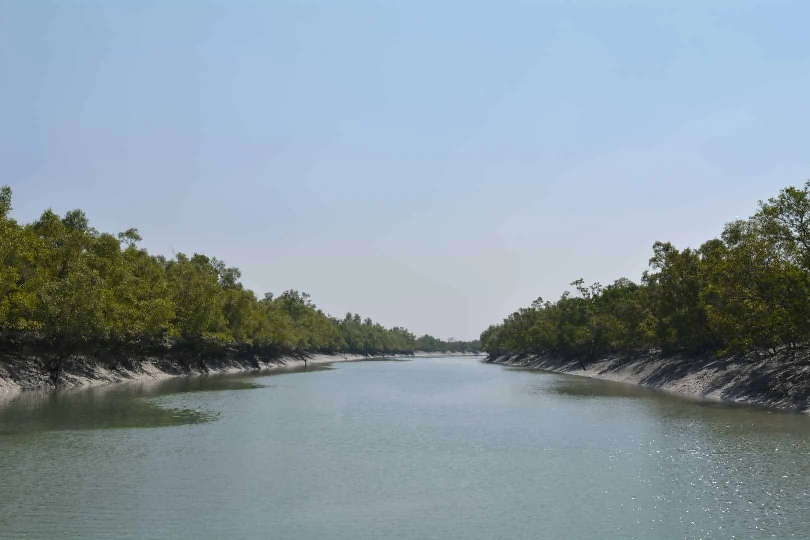Table of Contents
Sundarban Tour: Finding Your Perfect Season in the Mangrove Kingdom
The Sundarbans. Just the name evokes a sense of mystery and primal wonder. This vast labyrinth of tidal waterways, mudflats, and resilient mangrove forests is a UNESCO World Heritage Site and a bucket-list destination for adventurers and nature lovers alike. But a question echoes in the mind of every prospective traveler: "Which month is truly the best for a Sundarban tour?"
The answer, like the forest itself, is nuanced. There isn't one "perfect" month for everyone. The best time for you depends on what you seek from this extraordinary experience. Do you dream of spotting the majestic Royal Bengal Tiger? Are you a birdwatcher with a life list to complete? Or do you simply wish to cruise through the emerald waterways under a comfortable sun?
Let’s navigate the seasons of the Sundarbans to find your ideal window for adventure.
The Crown Jewel: Winter (October to March) – The Best All-Round Season
If we must crown a winner, winter is undoubtedly the best time for a Sundarban tour for most travelers. This period offers the most pleasant and conducive conditions for exploring the wild.
-
Weather: The climate is at its most forgiving. The harsh sun of summer mellows into a gentle warmth, with cool, breezy evenings. The humidity drops significantly, making safaris and boat journeys incredibly comfortable. Average temperatures range from 10°C to 30°C.
-
Wildlife Sightings: This is a prime time for wildlife activity. As the water levels recede after the monsoon, animals are forced to congregate around permanent water sources, increasing your chances of sightings. The most sought-after prize, the Royal Bengal Tiger, is more likely to be seen basking on the riverbanks or traversing the exposed mudflats. Spotted deer (Chital Wild), wild boars, and crocodiles are also commonly seen.
-
Birdwatcher's Paradise: The Sundarbans transforms into a haven for avian life. It becomes a temporary home for a staggering variety of migratory birds from Siberia, Europe, and other colder regions. Look out for the vibrant Northern Pintail, the elegant White Ibis, the curious Sandpipers, and the majestic Brahminy Kites. The cacophony of calls is a symphony for nature enthusiasts.
-
Overall Experience: Clear skies, calm waters, and lush greenery left over from the monsoon create picture-perfect conditions for photography. It's also the peak tourist season, so all facilities and tours are fully operational.
Ideal for: First-time visitors, photographers, bird watchers, and those who prefer comfortable weather.
The Sweltering Prelude: Summer (April to Mid-June) – For the Intrepid Explorer
Summer in the Sundarbans is intense, characterized by rising heat and stifling humidity. This season is not for the faint-hearted but offers its own unique rewards.
-
Weather: Be prepared for high temperatures, often soaring above 35°C-40°C, coupled with high humidity levels. It can be physically demanding.
-
The Silver Lining – Tiger Spotting: Why would anyone brave this heat? The answer is tigers. As the water sources shrink further, the big cats have no choice but to come to the main riverbanks to drink, especially in the early mornings and late afternoons. Your chances of a rare tiger sighting are statistically higher during this period.
-
Considerations: The heat can be oppressive. It is absolutely essential to stay hydrated, wear light, breathable clothing, and plan your activities for the cooler parts of the day. Tourist numbers are lower, which can mean a more solitary experience.
Ideal for: Hardcore wildlife enthusiasts and photographers specifically targeting tiger sightings, who don’t mind the challenging climate.
The Season of Rebirth: Monsoon (Mid-June to September) – The Untamed Beauty
The monsoon breathes new life into the Sundarbans. The forest is drenched, the rivers swell, and the mangroves glow in every shade of emerald and jade. It’s a dramatic and raw portrayal of nature’s force.
-
Weather: This season receives heavy rainfall from the southwest monsoon. Boat journeys can be choppy, and tours are frequently interrupted or canceled due to weather warnings, including the risk of cyclones.
-
A Lush Transformation: The forest is at its most vibrant and lush. The air is fresh and clean, and the entire ecosystem is rejuvenated. It's a fantastic time to see the unique vegetation of the mangroves in its full glory.
-
Challenges for Wildlife Viewing: The high water levels are the main drawback. Animals can disperse deeper into the forest with abundant water available everywhere, making sightings, particularly of tigers, much rarer. Many forest lodges and tourist facilities remain closed during peak monsoon due to safety concerns.
-
Unique Perspective: For those who do venture out, it’s a chance to see the Sundarbans in its most powerful and primal state, far from the crowds.
Ideal for: Adventure seekers who enjoy the rain, landscape photographers, and travelers looking for a unique, off-season experience (with flexible plans).
The Verdict: So, Which Month is Best?
-
For the best overall experience: Plan your Sundarban tour between November and February. The weather is sublime, and wildlife sightings are at their peak.
-
For the highest chance of a tiger sighting: Consider the shoulder months of March, April, or May. Be ready for the heat.
-
For a unique, lush perspective: The early monsoon month of June can be a good compromise if you’re lucky with the weather.
Essential Tips for Your Trip
-
Book in Advance: Especially during winter, book your boat and accommodation months ahead.
-
Pack Smart: Light cottons for summer, layers for winter, and rain gear if traveling in the monsoon. Don’t forget binoculars, a good camera, sunscreen, mosquito repellent, and a first-aid kit.
-
Respect the Wild: This is a fragile ecosystem. Follow your guide’s instructions, do not litter, and maintain a safe distance from all animals.
-
Manage Expectations: The Sundarbans is a vast, wild forest. Tiger sightings are a matter of luck and privilege, not a guarantee. The true magic lies in simply being present in this incredible biome.
No matter when you choose to go, the Sundarbans promises an unforgettable encounter with the wild. Choose your season, pack your sense of adventure, and prepare to be humbled by the grandeur of nature.







.gif)
.gif)

No comments yet
Be the first to share your thoughts!